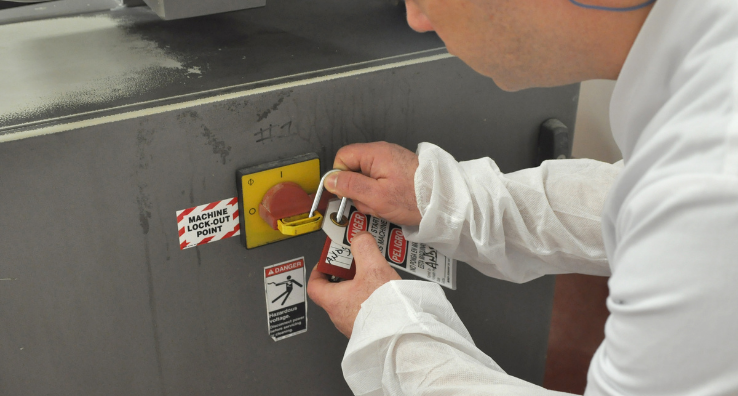5 Ways to Improve your EHS Performance and Compliance with ISO 14001 and 45001

As an Intertek Alchemy consulting team member, I frequently work with clients to help inspect and improve their EHS operations for regulatory compliance. I am often asked how to improve overall EHS performance and compliance with environmental and safety standards. One way to accomplish this is through the ISO 14001 and 45001 standards.
Getting certified in ISO 14001 displays a commitment to the environment, while ISO 45001 shows a commitment to your employees. ISO 14001 covers the implementation of an Environmental Management System (EMS), focusing on an organization’s impact on their external environment by reducing waste, pollution, and energy consumption. ISO 45001 focuses on a company’s internal health and safety environment.
When combined, the two standards can improve your company’s overall EHS performance and compliance by harnessing your employees’ diverse knowledge and skills. By involving your entire workforce, you can inspire enthusiasm among your ranks and help create future EHS leaders.
For a deeper dive into these standards, check out the replay of our webinar: Powering EHS Performance with ISO 14001 and 45001.
But for now, here are five ways ISO 14001 and 45001 can help you improve your EHS performance and compliance.
1. Know Thyself within the Context of ISO 14001 and 45001
Understanding how context relates to these two standards is essentially the process of knowing your organization and affected parties. This step requires you to know who you are, where you are, and what you do as an organization. You’ll need to look at your interested parties and what they want from your EHS management system. It also requires you to outline the scope of your management system to identify what needs to be explicitly managed.
Understanding the context of your involvement with ISO 14001 and 45001 helps improve your compliance by uncovering the internal and external issues that affect your compliance obligations. It helps eliminate any surprises you might encounter with OSHA or the EPA. And it reveals any regulated aspects of your operations that you might have otherwise missed. This step helps identify issues that affect your objectives and measurements and potential opportunities for performance improvements.
2. Secure Leadership Commitments and Consult with Your Frontline Employees
Nothing can be accomplished without the support of your management and frontline employees. This step helps secure commitments from both. Start by identifying your top management and make them aware they are 100 percent responsible for the success or failure of your system. Then use the standards to educate workers about your plan and seek their input and involvement.
You can bolster your compliance efforts by putting responsibility into the hands of the management team that controls your resources and helping them understand how you use them. Your employees can help you pursue your compliance obligations and address potential roadblocks. Both parties can work together to improve your overall performance with a clear understanding of your goals, resources, and challenges.
3. Address Risks and Opportunities
With the information in hand from step 1 and the internal support you secured in step 2, you can begin identifying the risks and opportunities such as environmental aspects, OH&S hazards, and compliance obligations. The picture you develop here should help reinforce your intended outcomes, whether meeting compliance obligations or achieving particular environmental and OH&S objectives.
This step should also reinforce the importance of meeting all of your applicable compliance requirements and determine the actions necessary to make it happen. It will also support the attainment of continual performance improvement.
4. Plan, Communicate, and Document
Now it’s time to develop a plan for meeting your goals and your commitment to continual EHS performance improvements. Establish measurable targets and specific actions, and then match them with the needed resources, responsibilities, and timing. Determine the best way to communicate your compliance and performance objectives, and document them to share internally.
5. Evaluate Your Performance
ISO 14001 and 45001 provides the means for tracking EHS and system performance while demonstrating your compliance status. This will also inform top management of your system’s effectiveness and ability to drive improvement.
The evaluation also enables you to identify corrections needed to hit your compliance levels. And it identifies the strengths and weaknesses of your performance.
This all just scratches the surface of how you can use ISO 14001 and 45001 to improve your compliance and safety performance for your internal and external work environments. The webinar goes into greater detail with specific tips and directions. Or, if you’d like a personal evaluation of your environment and guidance on how to use ISO 14001 and 45001, contact us to arrange a call.





